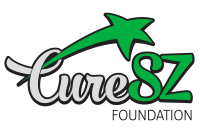תסמינים שליליים של סכיזופרניה

מאת הנרי א. נסראללה, MD
סגן נשיא בכיר ומנהל מדעי, קרן CURESZ
Schizophrenia is a complex neuropsychiatric syndrome with multiple symptom domains. The most recognizable symptom cluster is psychosis (classically, hallucinations and delusions) which is the reason many patients are initially hospitalized. However, most patients with schizophrenia also suffer from three other symptom clusters including negative symptoms (deficits in normal brain function such as lack of motivation and interest that impair social and vocational functioning), cognitive impairments and mood symptoms. In fact, the negative and cognitive symptoms are what causes functional disability, even after the psychotic symptoms subside with antipsychotic medications.
Negative symptoms were not widely recognized until the 1980’s. Prior to that, the focus in schizophrenia was on the psychotic symptoms (hallucinations and delusions). The persistence of negative symptoms after the psychosis is controlled led to many studies that characterized the various negative symptoms.
להלן התסמינים השליליים של סכיזופרניה, אשר נצפים בדרך כלל על ידי המשפחה או הפסיכיאטר, ולא המטופלים עצמם:
1. AFFECT PATHOLOGY This refers to a flat, blunted or restricted facial expression. In addition, other manifestations include poor eye contact, decreased spontaneous movements, monotone speech (referred to as aprosody), and failure to recognize the facial expression of other people (such as neutral, angry, sad, disgusted or anxious).
2. ALOGIA Which is a reduction in the quantity of thought, and poverty of speech, including speaking in monosyllables rather than sentences. Sometimes, patients may suddenly stop speaking in mid-sentence (called “blocking”) which is an interruption of thought. There is often a prolonged pause before responding to a question.
3. אסוציאליות שהיא היעדר או הפחתה של עניין בקיום יחסים חברתיים או אינטראקציה עם אחרים. מטופלים גם אינם מסוגלים להרגיש אינטימיות או קרבה עם אחרים.
4. AVOLITION ואדישות שהיא אובדן היכולת ליזום או להתמיד בפעילות מכוונת מטרה. זה כולל אי רחצה, טיפוח לקוי, ואי עשיית דבר כל היום, לעתים קרובות מתפרשים בטעות כ"עצלות".
5. ANHEDONIA Which is the loss or reduction of the capacity to experience pleasure, manifested by lack of interest in enjoyable activities. This is also a decrease in sexual activity, interest or enjoyment. Unlike the anhedonia of depression, it is not reversible in most patients.
6. חוסר תשומת לב שהיא חוסר היכולת לשמור על משימה או מעורבות / מעורבות למשך פרק זמן סביר. המטופל נראה שקוע בעולם פנימי ללא מטלות חיצוניות.
7. ANOSOGNOSIA Also referred to as non-awareness of illness. The patient lacks insight into their illness or disability. It can also be regarded as a cognitive deficit. This lack of insight prevents patients from seeking treatment or help to alleviate symptoms or to solve personal problems. Anosognosia can be reversible with continuous adherence to antipsychotic therapy.
Researchers sometimes classify the above negative symptoms into two major subdivisions:
1. ביטוי מופחת, הכולל השטחה רגשית ואלוגיה, ו
2. אדישות/התנערות, הכוללת חוסר מוטיבציה ואי-חברתיות.
In contrast to “positive” psychotic symptoms for which dozens of medications are available, there are no treatments yet for negative symptoms. It is a huge unmet need in the field of schizophrenia. So far, many attempts have been futile in developing a pharmacological treatment for negative symptoms. Thus, psychotherapy is the main approach to help patients recognize and overcome their negative symptoms. Occupational and recreational therapies can also be helpful. There are a couple of promising medications on the horizon. However, the FDA has not approved any of these yet.

